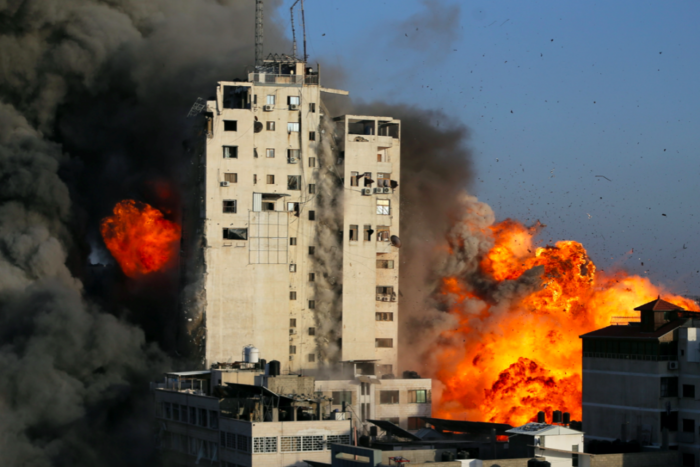
Screams and flying debris enveloped Umm Majed al-Rayyes as explosions hurled her from her bed in Gaza City. Groping in the dark, the 50-year-old grabbed her four children and ran as Israeli bombs struck their apartment building Wednesday, shattering windows, ripping doors to splinters and blasting away concrete.
According to AP report, While casualties mounted this week in the most severe outbreak of violence between Israel and the Gaza Strip since a 2014 war, al-Rayyes and other Palestinians in the line of fire faced an all-too-familiar question: Where should we go?
This whole territory is a tiny place. It’s a prison. Everywhere you go, you’re a target, al-Rayyes said by phone from a neighbor’s house, where she sought refuge with her teenage sons and daughters and a few bags of clothes after the Israeli airstrike that she says came without warning.
In Gaza, a crowded coastal enclave of 2 million people, there are no air raid sirens or safe houses. Temporary United Nations shelters have come under attack in previous years of conflict. In the past two days, Israeli airstrikes brought down three huge towers housing important Hamas offices and some businesses after the Israeli military fired warning shots, allowing occupants to flee.
Fighter jets also targeted without warning multiple residential buildings, located in teeming neighborhoods where Israel alleged militants lived. In all, more than 65 Palestinians have been killed in Gaza since Monday, including 16 children. Among the dead were both militants and civilians, including at least two women and children who died during the apartment building strikes.
At a Gaza City hospital, distraught families told of pulling bloodied relatives from piles of rubble. One woman said her 4-year-old grandson and pregnant daughter-in-law were killed when an Israeli air raid hit their two-story building on Wednesday.
They bombed them without any warning. The house had nothing but the kids, Umm Mohammad al-Telbani cried in the hospital morgue.
The Israeli government long has accused Hamas of using civilians as human shields against retaliatory strikes; militants often launch rockets from civilian areas and set up command centers inside residential buildings. Yet Israel received heavy criticism for its tactic of bombing buildings during the 2014 war with Hamas.
Recalling the horror of past wars, Gaza residents say they feel nowhere is safe. They also cannot leave the narrow territory, one of the world’s most densely populated places. It has been under a crippling Israeli-Egyptian blockade since Hamas seized control in 2007. Along its borders, Gaza is encircled by sensor-studded fences, concrete walls, galvanised steel barriers and the Mediterranean Sea, where Israel restricts boats from Gaza to some 16 nautical miles offshore.
There is nowhere to run, there is nowhere to hide, said Zeyad Khattab, a 44-year-old pharmacist in Gaza City, who fled to the family home where he grew up in the central Gaza district of Deir al-Balah with a dozen relatives when bombs pounded his residential high-rise. That terror is impossible to describe.
[the_ad id=’22722′]


















